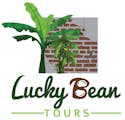The Sugar Kettles of New Orleans

David Feldman, creator of Lucky Bean Tours’ JFK/Oswald Conspiracy Theory tour, shares his endless fascination with all aspects of Louisiana culture and the history of New Orleans in his examination of the ubiquitous sugar kettles, seen all over Louisiana. There are at least three sugar kettles on Lucky Bean’s Garden District tour, and three on our French Quarter tour.

cattails-cathedral
You see them dotted all over New Orleans. Then again, you don’t. Your eyes are drawn to what’s in them: the luxuriant plantings, the elegant fountains. Yet they generated almost unimaginable wealth here in Louisiana in the early 19th century. They are sugar kettles. Tens of thousands of them were used in sugar houses to produce granulated sugar on plantations here. A sugar kettle is in the yard of the very first stop on Lucky Bean Tours’ Garden District walking tour.
Indigo was the cash crop in Louisiana for most of the 18th Century. Indigo is used to make blue dye. Fortunately for Louisiana, Europe needed a lot of blue dye for military uniforms during the war-plagued 18th century. Unfortunately, a virus decimated indigo production here at the end of the century. Etienne de Boré had been an indigo planter. We’ll let George Washington Cable from his Creoles of Louisiana take up the story:
The year 1794 found him face to face with ruin………. he persisted in his determination to abandon indigo, and risk all that was left to him on the chance of a success which, if achieved, would insure deliverance and fortune to himself and the community. He bought a  quantity of canes…..[and] planted [it] on the land where the Seventh District (late Carrollton) now stands, and while his crop was growing erected a mill, and prepared himself for the momentous season of ‘grinding.’
quantity of canes…..[and] planted [it] on the land where the Seventh District (late Carrollton) now stands, and while his crop was growing erected a mill, and prepared himself for the momentous season of ‘grinding.’
Cable goes on to romantically dramatize the moment:
…….the dark sugarhouse; the battery of huge cauldrons, with their yellow juice boiling like a sea, half-hidden in clouds of steam; the half-clad, shining negroes swinging the gigantic utensils with which the seething flood is dipped from kettle to kettle;……….and in the midst the old mousquetaire, dipping, from time to time, the thickening juice, repeating again and again his simple tests, until, in the moment of final trial, there is a common look of suspense, and instantly after it the hands are dropped, heads are raised, the brow is wiped, and there is a long breath of relief—“it granulates!”
The truth of it is neither romantic nor dramatic. The harvested cane was crushed using an animal-powered three-roller mill. The extracted cane juice was heated, clarified, & evaporated in a set of large open kettles (Sugar Kettles) of decreasing size which were enclosed in brickwork over a furnace. After syrup resulted from the evaporation of  the juice, the Sugar maker, using the rule-of-thumb techniques, determined when sugar crystals had formed. This was called a “Strike” and was the point at which the concentrated syrup was turned out into shallow wooden tanks and left to cool.
the juice, the Sugar maker, using the rule-of-thumb techniques, determined when sugar crystals had formed. This was called a “Strike” and was the point at which the concentrated syrup was turned out into shallow wooden tanks and left to cool.
Slaves worked around the clock during the short autumn harvest season to keep the massive sugar kettles going. They labored in the dark and often sustained third-degree burns as they ladled the hot cane juice from kettle to kettle. Infections set in and often proved fatal. Slaves chained together feeding cane into the crushing mill often had limbs amputated on the spot lest they both be drawn into the crushing wheels. Punishment by whip was common.

Etienne de Boré marketed $12,000 worth of granulated sugar that first season(That’s about $300,000 in today’s money!).The agriculture of the Delta was revolutionized. Soon afterwards, New Orleans was the market for 5,000,000 pounds of sugar. The world market for sugar was insatiable. In England alone, average consumption rose from four pounds per person in 1700 to eighteen pounds in 1800, thirty-six pounds by 1850 and over one hundred pounds by the twentieth century. The industrial revolution ran on tea, sugar, bread and jam.
For some, the cane grinding season, or roulaison, was a festive time on most plantations. Social gatherings, dances, and candy pullings took place after the cane was ground, and visitors to the plantation sugarhouses were often treated to “hot punch,” a drink made of partially boiled cane juice and French brandy. The “hot punch” was made and served from the Sugar Kettle. For others, the slaves, it was not so festive.
